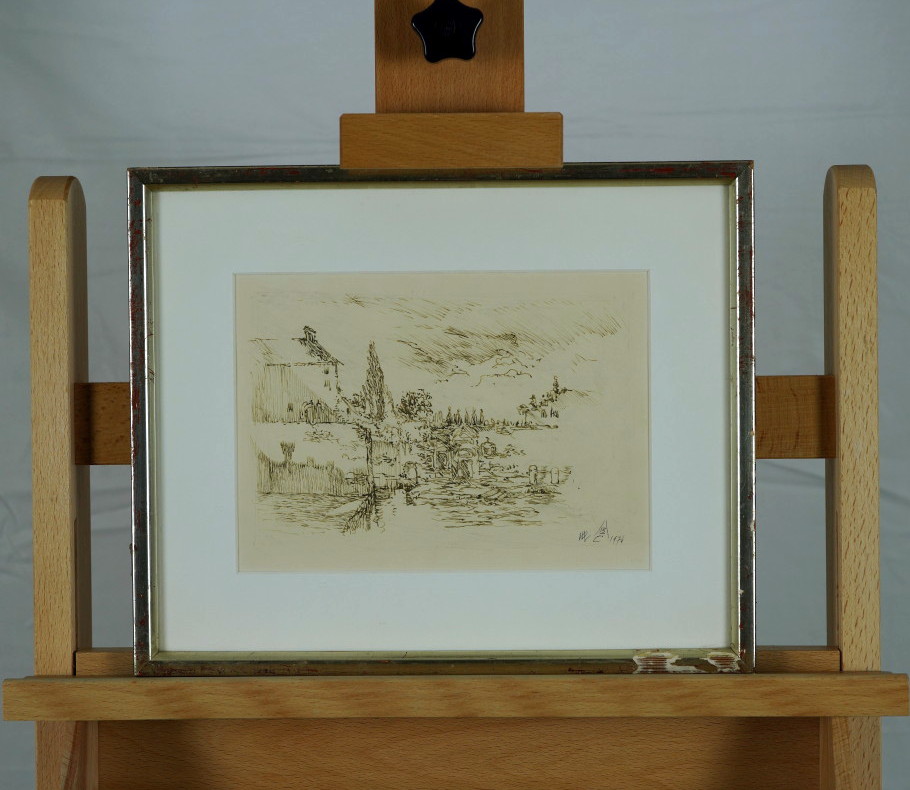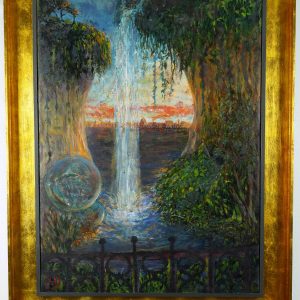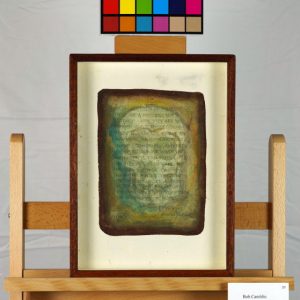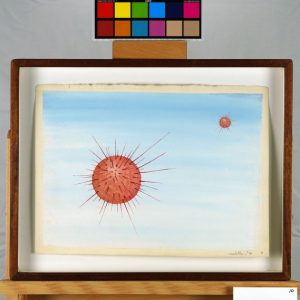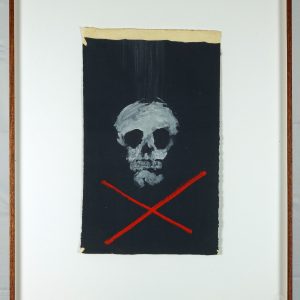Description
ABC, 1976
Pen and ink
Signed ABC (what is the reason for this?)
6.5 x 9 in. (image)
11 x 13 in. (frame)
original, includes certificate of authenticity from ArtTrust
The sketch “ABC” evokes a serene landscape, subtly framed by elements of nature and architectural ruins. The composition suggests a peaceful, almost meditative atmosphere, with delicate lines that outline the forms of the structures and natural surroundings. It feels like a moment suspended in time, inviting the viewer to contemplate both the beauty and impermanence of the scene.
The artwork captures the Zen philosophy of embracing simplicity and mindfulness. The tranquil scene encourages letting go of attachments, offering a visual koan where emptiness and form intermingle. The sketch illustrates the concept of “mu,” the Zen state of nothingness or non-duality. Each line breathes life into emptiness, creating a tranquil harmony between the material and the immaterial.
In the I Ching, this piece resonates with Hexagram 20, “Kuan,” which means “contemplation” or “viewing.” The hexagram signifies observing without judgment and embracing a broader perspective. The sketch invites the viewer to stand back and perceive the entire landscape as a holistic entity, echoing the themes of insight and introspection associated with Kuan.
Bridging the Zen and I Ching interpretations, the sketch can be seen as a meditation on nature’s quiet resilience and the human-made remnants that inhabit it. It connects the inner journey of contemplation with the outward beauty of the landscape, suggesting that true understanding arises from an integration of experience and introspection. The fluidity of the lines echoes nature’s cycles, where creation and decay co-exist in an ongoing flow, much like the Tao itself.
Stylistically, the piece aligns with traditional landscape sketches that date back to the Romantic period, where nature was viewed as a source of spiritual insight. Its delicate lines and use of negative space recall the techniques of artists such as Caspar David Friedrich, who also used landscapes to evoke feelings of transcendence and introspection. The work’s minimalist yet expressive style bridges Eastern aesthetics with Western landscape traditions, drawing upon both to create a universal sense of place.
This drawing invites viewers to reflect on the relationships between form and emptiness, materiality and spirituality, reminding us of the world’s transient nature and the timeless beauty found in stillness.
*Shipping cost will vary, please inquire at sales@camblingallery.com before purchasing.
Currently ships from Oregon, USA
Member of artnet? Apply for a discount! Inquire about intergallery and permanent loans for museums.
Reproductions of this drawing are available in multiple sizes!
Click here to use our high-resolution viewer!
This artwork is available with a non-fungible token to ensure traceability and transparency of provenance.
The royalty factor – Unlike traditional artworks, such as paintings, mosaics, statues, and the like, NFTs can be programmed to provide royalties to you every time the painting (and token) is sold and resold – for eternity. That mind-bending Camblin you sold could be worth millions one day and provide income for your great-great-great grandkids!
Anti-forgery – The central idea underpinning NFTs is that they are built on the blockchain, which is meant to offer advanced security. Think of it like an un-erasable and un-avoidable copyright.
Easy authentication – Another compelling aspect of NFT art and NFTs in general is the ability to quickly and easily authenticate items, as the record of ownership is scrupulously kept on the blockchain.
